The World outside the Garden
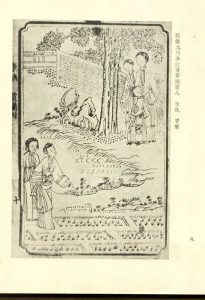 In many ways the Jia 賈 household is sealed off from the rest of the world of Qing China. It is not just the young women in the household who are restricted in their ability to leave the family compound. Baoyu complains that he cannot freely go about; it is as if assuming the privileges of a woman he takes on the restrictions attendent on being a woman. The restrictions are not just physical: the family is a world unto itself until the end, when the world comes crashing down. One could argue that their isolation from and inattention to the world around them are factors in their ultimate fall.
In many ways the Jia 賈 household is sealed off from the rest of the world of Qing China. It is not just the young women in the household who are restricted in their ability to leave the family compound. Baoyu complains that he cannot freely go about; it is as if assuming the privileges of a woman he takes on the restrictions attendent on being a woman. The restrictions are not just physical: the family is a world unto itself until the end, when the world comes crashing down. One could argue that their isolation from and inattention to the world around them are factors in their ultimate fall.
There are a few occasions where the members of the Jia household do get out: this charming picture shows the young widow Li Wan (her husband was Baoyu’s much-lamented elder brother) and her son Jia Lan, observing agricultural workers. Agricultural work is seen as somewhat exotic to the denizens of the Jia household, but it was an important source of their income.
The difference between the world inside the garden and the world outside it is made clear when Baoyu, more or less on a lark, visits his maid Aroma, who is at home withher family. He does not belong in her modest home, which she sees clearly but he does not. His visit creates an awkward situation for her, which she and the reader recognize, but he does not.
It may well be that the single most important fact about eighteenth-century Chinese history is that from the late seventeenth century to the late eighteenth century, the population doubled, from 150 million to 300 million. (To give some perspective, the population of Britain as revealed in the 1801 census was about 10.5 million.) Chinese governing institutions (tax collection, river conservancy, judicial systems) which worked fairly well for a population of 150 million were strained by a population of 300 million.
The World outside the Garden: Qing Politics
The novel Dream of the Red Chamber is set in amorphous time and ambiguous space: There are no references in the novel which allow us to place it in a specific time and while the emperor is referred to it is never by name. In some chapters of the novel, the setting seems to be Nanjing, in others, it seems to be Beijing. The vagueness of time and space serves to reinforce the fictionality of the novel–it did not take place in real time or space, but occupies an imaginary world, a world of illusion. Indeed, in the first chapter of the novel when the monk Vanitas tells the reader all of the details that are inscribed on the stone, he adds “All it lacked was the authentication of a dynasty and date.”
The novel was completed during the middle of the reign of the Qianlong emperor, and published near the end of the reign. The Cao family had come to prominence under the reign of his grandfather, the Kangxi emperor. Although the Qing emperors were Manchu and not Han Chinese, Kangxi and Qianlong are regarded as two of the greatest of Chinese emperors. Recent scholarship stresses the importance of their Manchu identity to their rule.
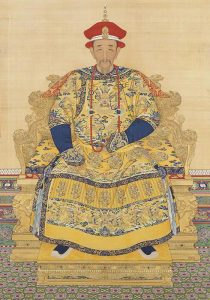
But the novel is very much connected to the real political world of the eighteenth century. Many readers believe that the novel is to a large degree autobiographical and that Baoyu in fact represents Cao Xueqin. This is reinforced by the tendency of some commentators, like “Red Inkstone” (Zhiyanzhai 脂硯齋) to make comments like “I was there” and “I remember it as if it were yesterday.” (Saussy, “Author,” 122). One of the branches of “Redology” (the study of the novel–the Chinese term is hongxue 紅學) is concerned with precise identification of events in the novel with their real world counterparts.
One does not have to subscribe to a narrowly autobiographical reading to see parallels between the life of Cao Xueqin and events in the novel. The Cao family was rich and powerful. Cao Xueqin’s grandfather, Cao Yin, was an intimate of the Kangxi emperor, and Cao Yin’s mother, the lady Sun, was the emperor’s wetnurse. The scholar Evelyn Rawski suggests that the Cao family fortunes were largely built on the prestige which accrued to the family because of the lady Sun’s relationship with the emperor. (The Last Emperors, 50). Her role as a wetnurse led to her husband’s appointment as Commissioner of Imperial Textiles in Suzhou in 1690 when he was only thirty-three. In 1693 he became Textile Commissioner in Nanjing. He was later appointed Salt Commissioner, which is the position that made him wealthy. The relationship with the emperor remained close; when Cao Yin was suffering his final illness, he received solicitous advice from the emperor.
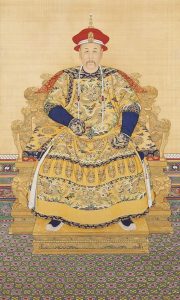
Power that was built on a personal relationship with the emperor proved fragile. The Cao family suffered a spectacular fall: Cao Fu was charged with financial mismanagement. Their fall may have been intensified by the fact that the family had not supported Yongzheng in his ultimately successful quest for the throne. The Kangxi emperor had thirty-six sons, twenty of whom survived to adulthood. Manchu succession rules prescribed that the most able son (rather than the eldest son) should succeed. (These events are detailed in Jonathan Spence’s Ts’ao Yin and the K’ang-hsi Emperor.)
The fall of the house of Cao, when it happened, was spectacular. Family members were detained, and the family compound was searched and objects confiscated in scenes that are reminiscent of the search of the Jia compound. The report of the confiscation of family wealth detailed:
Living quarters and servants dwellings numberng thirteen buildings, containing in all four hundred eighty-three units (jian). Eight estates, totalling 1,967 mou [approx. 300 acres]. Household servants of all ages, male and female, numbering in all one hundred and fourteen people. (Spence, Ts’ao Yin, 290)
While the emperor (who is never named) is always referred to in the novel glowing terms, we get another picture from Yuanchun, the Imperial Concubine. She laments that she is walled up in “That Place” (chapter 18). The family is honored but somewhat inconvenienced by her high position.
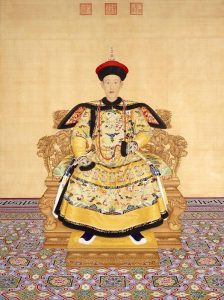
But her high position proves fleeting. The crises in the Jia family come not from any imperial malevolence but rather from criminal activities and corruption among family members. But the fact that the novel ends, unfinished, at eighty chapters leaves adapters with challenges and with possibilities.
All four of these portraits–three of emperors, one of a consort, two by Chinese court painters, two by an Italian Jesuit who became one of the most important of Chinese court painters in the eighteenth century–make a clear statement about imperial identity. The consort is subsumed into that imperial identity: we see that in the story of Yuanchun (Princess Jia) in both the novel and the opera.
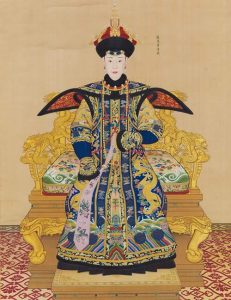
For further reading, see Rawski in Schonebaum and Lu. See also Three Emperors at the MIT Visualizing Culture project.
Correspondence Between Cao Yin 曹寅 and Kangxi 康熙 Emperor
The correspondence between Cao Yin and the Kangxi emperor shows a close relationship, which Jonathan Spence documents in Ts’ao Yin and the Kangxi Emperor.
In spring of 1710, Cao Yin wrote the emperor that he was suffering from an eye disease. The emperor responded:
You have been living a long time in the south, and have grown emaciated and weak. Now on top of this you have an eye disease. It is absolutely imperative that you stop taking restoratives. The best thing for you to drink is a soup with six parts of dihuang 地黄 (Rehmannia glutinosa); these proportions should not be changed. If you take plenty of this it will certainly be efficacious. (Spence, Ts’ao Yin, 256)
Later in the same year, Cao wrote the emperor:
When my household slave returned from the south with my memorial, I found this imperial endorsement. “Noted. How is your illness now, compared with before?” When I knelt and read this, I could not overcome my feelings, and I wept…. This year I accidentally caught a chill and because I made the mistake of taking ginseng, I later contracted a painful skin disease (jie 疥)and was ill in bed for over two months. I was fortunate enough to receive the Emperor’s favor, ordering me to take dihuang soup. After taking it, I recovered completely. Now I am taking dihuang pills, and compared with before, I am in excellent health. (Spence, Ts’ao Yin, 257)
The text of the emperor’s endorsement on this memorial read:
Noted. But for this kind of skin disease, you shouldn’t take drugs. If the poison entered the system, I fear that it afterward might become leprosy. Apart from cleansing with salt water, no other prescription will help you. Take care, take care. You can substitute tufuling (土茯苓 Smilax sinensis) for tea. Drinking this often is beneficial. (Spence, Ts’ao Yin, 257)
Li Xu’s Memorial on Cao Yin’s Death and his Debts
When his friend Cao Yin died, Li Xu sent a memorial to the Kangxi emperor, detailing the debts that Cao had accrued, and asking for a job which would allow him (Li) to gain access to resources which would enable him to repay the debt.
On August 2, Cao Yin caught a chill, which developed into malarial fever. Finally, it became an incurable illness, and on August 24 at 7 am he died. Lying back on his pillow he sighed with remorse that this sudden departure from the world would mean that he would be unable to repay the Emperor for his favors. He said to ne: “At the Nanking textile commissioner’s yamen, revenue deficits have accumulated over the years and are more than 90,000 taels, and in accordance with the edict received last year that the deficit accumulated by the Lianghuai salt merchants should be paid off by officials and merchants together, I should have paid off 230,000 taels. Yet I have no possessions I can sell, no resources I can convert. Though my body may die, my eyes will remain open.” So Cao Yin spoke to me near the end.
Although it is exceedingly difficult to assign meaningful monetary equivalences for the Qing dynasty, Lord Macartney, an English emissary to China in the late eighteenth century, estimated that a peasant could live on 12 taels a year. This gives a sense of the magnitude of the Cao debt. (Spence, Ts’ao Yin and the K’ang-hsi Emperor, 82)
China in the World
An attentive reader can find slight references to trade with the world beyond China in the novel. Sometimes the luxurious textiles come from afar–a Japanese damask robe, a Russian peacock cloak, a Western Ocean linen handkerchief or napkin (ch.58), a painting of a girl with yellow hair. Sometimes we see objects that come from Europe–clocks and watches appear in the novel, with no sense that they are exotic (see for example chapter 58, when a broken clock sends Skybright looking for a watch. When she tells Aroma what time it is, she says it is “half a cup of tea off dinner-time.)
Other western imports are also mentioned in passing, A self-propelling toy metal boat is referred to as a Western Ocean toy (ch.57). Although bronze mirrors in China were very old, western-style glass mirrors were new and were during the eighteenth century almost always imported. Mirrors (of both types) play an important role in novel–they are a conduit from the world of reality to the world of illusion, and they illustrate the problem of a sharp distinction between reality and illusion.
Westerners were an increasingly troublesome presence in China in the eighteenth century, but they were nothing that the Qing empire could not handle. The Chinese had devised a system for dealing with foreigners, called the tribute system. Under the tribute system, states would send emissaries and gifts to China and recognize the emperor of China as the “Son of Heaven.” But Europe did not fit into that world order.
Two main categories of foreigners mattered in eighteenth-century China: missionaries and merchants. The early eighteenth century saw a rupture in the relations between the Catholic church and the Chinese court, known as the Rites Controversy. One of the key issues in the controversy was whether ceremonies performed to honor ancestors (sometimes called “ancestor worship” in English) were religious rituals (and hence should be banned) or were social veneration (and should be permitted.) The early Jesuits, like Matteo Ricci, took a position that has been called accommodationist. However, in 1715 Pope Clement XI prohibited Chinese Christians from carrying out ancestral sacrifices. In 1721 the Kangxi emperor responded, saying:
It is impossible to reason with them because they do not understand larger issues as we understand them in China. There is not a single Westerner versed in Chinese works, and their remarks are often incredible and ridiculous. To judge from this proclamation, their religion is no different from other small, bigoted sects of Buddhism or Taoism. I have never seen a document which contains so much nonsense. From now on, Westerners should not be allowed to preach in China, to avoid further trouble.
The restrictions on missionary activity were followed several decades later with restrictions on merchants. In 1757, the Qianlong emperor decreed that all foreign trade should take place through the port of Canton, in what was known as the Canton System. Western traders chafed under the restrictions. A more important problem, however, was that while there was a great European demand for silk, porcelain, and, increasingly, tea, there were very few western goods that were attractive to the Chinese. In a letter to King George III written in 1793, the Qianlong emperor wrote “I set no value on objects strange or ingenious, and have no use for your country’s manufactures.” The trade imbalance was a serious problem.
Opium was the solution to the British trade deficit. In 1774, almost twenty years before the Dream of the Red Chamber was published, but well after it was in circulation, the British East India Company acquired a monopoly on tea in Bengal (in India) with the express purpose of selling opium to China to solve the trade deficit. Chinese attempts to stop the opium trade led to the Opium War in 1840. British victory in the Opium War ushered in a system of unequal treaties in which western powers gained trading rights and extraterritorial privileges throughout China.
There is very little of this turbulent world reflected in the novel. But later readers of the novel know what is to come, and their reading of the novel is doubtless influenced by that knowledge. Read on its own terms, the novel might seem a nostalgic lament for a world that no longer existed. One can imagine how much the more the novel would seem as a lament for a lost world to a nineteenth-century reader.
Text from Chapter 52: The Girl with the Golden Hair (Hawkes translation)
One of the odd reflections of the outside world in the novel is the episode of the girl with golden hair, from chapter 52. What follows is the episode in David Hawkes’ translation, followed by the Chinese text. Baoqin recounts a story from her childhood:
When I was eight I went with my father on one of his trips to buy foreign merchandise and while we were there we saw a girl from the country of Ebanash. She was just like the foreign girls you see in paintings: long, yellow hair done into plaits, and her head was smothered in jewels: carnelians, cat’s-eyes and emeralds. She was wearing a corslet of golden chain mail and a dress of West Ocean Brocade and she had a Japanese sword at her side covered all over with jewels and gold. Actually she was more beautiful than the girls you see in foreign girls you see in paintings. They said that she had a perfect understanding of our literature and could expound the Five Classics and write poems in Chinese. My father asked her through an interpreter if she would write something for us in Chinese characters and she wrote out one of her poems for him.
The cousins were enthralled and Baoyu eagerly begged her to show him the poem.
“That’s not possible,” said Baoqin. “I left it behind in Nanking.”
Baoyu was very disappointed.
“Just my luck!” he said. “And I was hoping to broaden my experience.”
“Don’t be a tease!” said Daiyu, giving Baoqin a tug. “You didn’t leave anything behind in Nanking. Look at all the luggage you brought with you. I think you’re making it up. The others can believe you if they like, but I don’t.”
Chinese text

